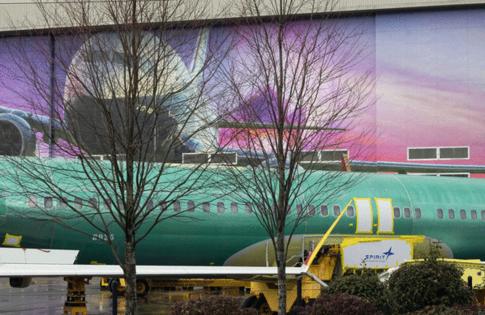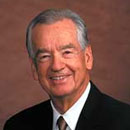Boeing begins design work on new jet, report says
Published in Business News
Boeing designers have begun work on a new commercial jet to replace its venerable Renton, Washington-built 737 model, The Wall Street Journal reported late Monday.
Citing anonymous sources, The Journal reported Boeing CEO Kelly Ortberg met earlier this year with officials from engine-maker Rolls-Royce to discuss a new engine for a potential new narrowbody aircraft. Boeing has also begun designing the flight deck for a new aircraft, The Journal reported, attributing to “people familiar with the matter.”
Industry insiders have been watching for Boeing to announce a new airplane for years, particularly as its European rival Airbus outpaces its production and market share.
Ortberg, who took over as CEO last year after an Alaska Airlines panel blowout upended the company, has been reluctant to discuss plans for a new plane, vowing to fix Boeing’s manufacturing problems before turning his attention to a new model.
A spokesperson for Boeing said Monday the company is focused on its “recovery plan” following the Alaska Airlines blowout in January 2024, as well as clearing its existing backlog of nearly 6,000 commercial airplanes that customers are waiting to receive. Boeing is also focused on finishing development of three new models — two Max variants and the 777X family — that have faced years of certification delays, the spokesperson said.
“At the same time, as we have done over the decades, our team evaluates the market, advances key technologies and improves our financial performance, so that we will be ready when the time is right to move forward with a new product,” the Boeing spokesperson added.
A new airplane would likely have a significant impact on the company’s Puget Sound workforce. In its most recent contract with the Puget Sound area Machinists union, Boeing committed to building the next new airplane in the area.
That commitment is only firm for the life of the four-year contract, which was ratified last November, but the concession was seen as a sign of Boeing’s commitment to the region.
The Machinists workforce is still reeling from the company’s decision to move production of its 787 Dreamliner away from Everett to be consolidated in Charleston, S.C. Because of that, Jon Holden, president of Machinists union district 751, demanded early in negotiations that Boeing include a commitment to build its next all-new jet here.
Boeing has fallen far behind Airbus in narrowbody sales and deliveries, a key measure of the company’s health.
Boeing had begun discussing plans for a new plane in 2018, hoping to fill a niche between the narrowbody 737 Maxes and the small widebody 787. But those plans never got off the ground. When Airbus launched a competitor to fill that hole, the A321XLR, Boeing was still reeling from two deadly Max crashes.
Those crashes, in Indonesia in 2018 and Ethiopia in 2019, killed 346 people.
Narrowbody aircraft are far cheaper to operate than widebody, two-aisle aircraft like the Everett-built 777 and the 787, the last “clean sheet” plane launched by Boeing. Conceived to revolutionize aircraft manufacturing and showcase new technology, the 787 Dreamliner has cost Boeing billions of dollars and been subject to mishaps, delays and other troubles.
In part because of the 787’s struggles, Boeing opted not to replace its aging 737 model and instead refreshed it. The result, the 737 Max, has been plagued by mishaps and tragedy, including the two that crashed shortly after the aircraft rolled out in 2017.
Boeing faced another regulatory and reputational setback earlier this year, when a panel flew off an Alaska Airlines flight out of Portland. That led the Federal Aviation Administration to cap Boeing’s 737 Max production at 38 planes per month, a threshold still in place today.
But the company has since begun to claw back its reputation with airline customers and regulators. On Friday, the FAA restored Boeing’s authority to conduct the final airworthiness inspection for new 737 Max and 787 planes coming out of the factory, a key limitation it had in place following the Max crashes for the 737 and other production issues on the 787.
The regulator said it thoroughly reviewed Boeing’s production process and would continue to maintain “direct and rigorous oversight” of the aerospace manufacturer.
“Safety drives everything we do, and the FAA will only allow this step forward because we are confident it can be done safely,” the regulator said in a statement.
As Boeing continues to see renewed optimism from regulators, Ortberg told investors at a September conference that he hopes to shift his focus toward certification of the Max variants and the 777X family.
Once that’s complete, “that will also free up a lot of capital for us to focus on what’s next,” Ortberg said. “And that’s very, very exciting work for, not just me, but for all the employees at The Boeing Company.”
©2025 The Seattle Times. Visit seattletimes.com. Distributed by Tribune Content Agency, LLC.












Comments